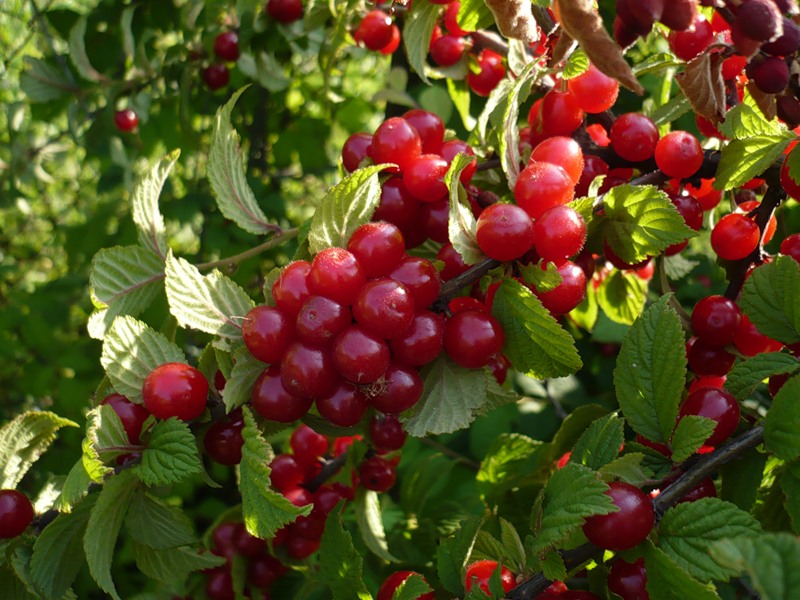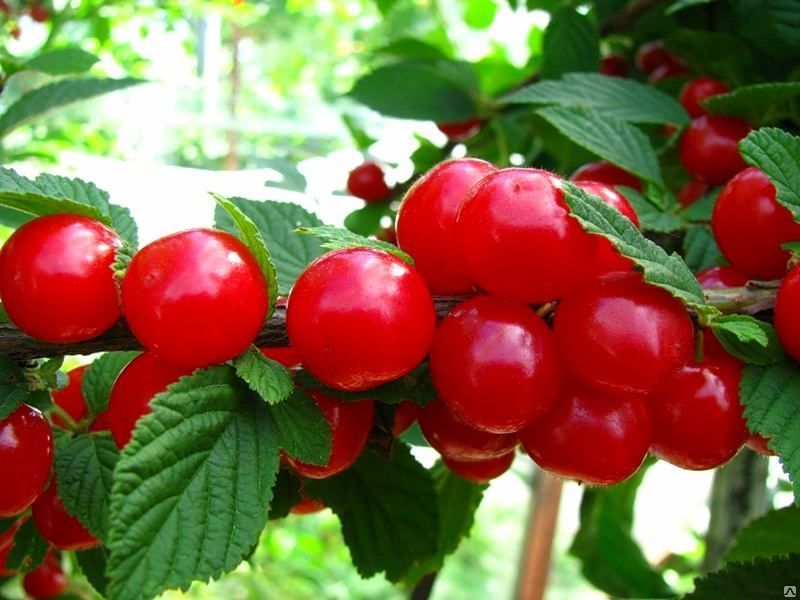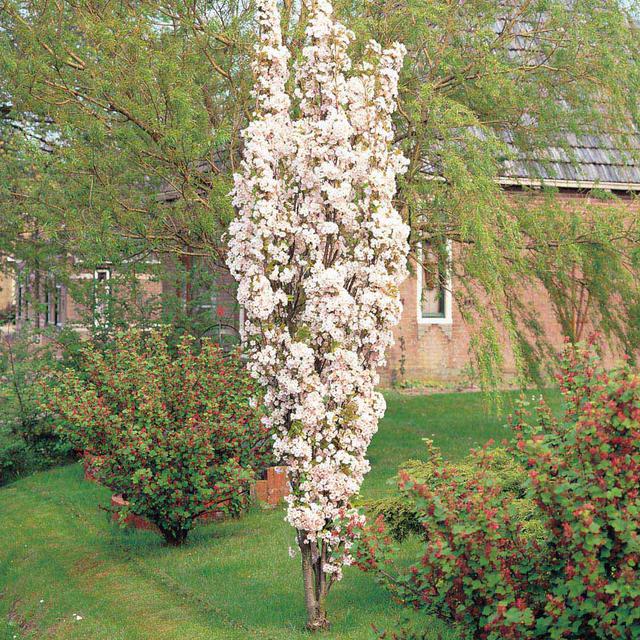Content:
There is an opinion that cherries are a real first aid kit. And this is really true, because the berry contains a large amount of nutrients. It is used for making jams, compotes, juices, jams, dumplings. This culture appeared in Russia for a very long time. Today, many people grow it in garden plots. This article will talk about columnar cherry varieties.
Description of culture
Cherries are considered the leader in the content of nutrients in their composition:
- glucose;
- anthocyanide;
- coumarin;
- vitamins C, E, B9;
- trace elements (sodium, zinc, boron, fluorine, magnesium);
- acids (malic, salicylic, citric);
- pectins;
- fructose.
These are just some of the beneficial components that are found in the fruits of each cherry variety. Together, they support the normal functioning of internal organs, act as a prophylaxis and treatment of renal diseases, anemia, arthrosis.
Due to the high content of pectins, cherries are able to remove toxins and toxins. In the case of bacterial diseases, the use of berries contributes to a speedy recovery. Cherry juice is used for cancer prevention because it contains ellagic acid. In case of cardiovascular diseases and stomach diseases, the berry normalizes natural processes. Some components of cherries inhibit the development of epilepsy and jaundice (infectious).
But the berry is popular not only due to its medicinal properties, it serves as a decoration for areas. During the flowering period, the tree is completely covered with a white cap of flowers, and this beauty cannot be compared with anything.
Features of columnar cherry
Among the many varieties, columnar cherry has recently become very popular. It is unpretentious to care for, takes up little space and is very attractive. The height of the tree reaches 2-2.5 m, which is convenient for harvesting.
Such cherries bear fruit steadily, but it is advisable to use the berries immediately, since the shelf life is shorter than that of conventional varieties.
When planting a columnar cherry, it is worth adhering to certain rules, since not all varieties of this subspecies can boast of increased frost resistance. Trees won't survive the winter, even if they are covered. But frost-resistant varieties also need to be protected from the negative effects of the cold (northern) wind by planting them on the southern side of the garden.
The quality of the soil plays an important role. Before planting seedlings in the pit, you need to add more mineral fertilizers (manure, chicken droppings).
Columnar cherry is unpretentious in care, but this does not mean that it can be planted and forgotten, and then reaped a rich harvest. On the contrary, in the first year after planting, you need to take care of the tree as carefully as possible (water, feed, loosen the soil). These measures will help the cherry to take root in a new place faster.
Columnar cherry: varieties for the Moscow region
Columnar cherries are not only delicious berries. Many gardeners plant it solely in order to transform the site. For these purposes, the following varieties are suitable for the Moscow region:
Delight
Description of the "Delight" cherry variety should start with the appearance. The size of the berries is large. The color is reminiscent of sparkling rubies. The color of the pulp is burgundy or red (dark). It tastes sweet and juicy. The height of the tree is up to 3 m. Cherry of this variety is resistant to various diseases and spring frosts.
Cherry Delight columnar ripens earlier than all other species. The harvest is stable from year to year.
Delight
This is new for 2017. It is grown in flowerpots or in the open field. Cherry height 1.5 m, pyramidal crown. The berries are juicy, the beans are easily separated from the pulp. Up to 20 kg of fruit can be harvested from one tree per season.
Curly
Another variety of columnar cherry, which pleases not so much with its harvest as with its external beauty. In spring, this dwarf tree blooms profusely, and in summer it gives sweet and sour berries. Of the minuses, it tolerates frosts down to -25C. Since in the middle lane winters are unpredictable, for prevention it requires shelter from severe frosts.
Baby (Baby)
This variety is very popular in dachas near Moscow and is just used for landscape design, although it bears a lot of fruit. The pulp of the berries is juicy and tender, the color is red (bright shade). The weight of one cherry is 8-12 g. It reaches a height of 2 m. Several shoots depart from the trunk. In spring it pleases with abundant pink flowering.
The peculiarity of the Baby is self-pollination and compact size, making it suitable for a small garden.
Queen
Cherry Koroleva columnar got its name for the attractive appearance of large berries of rich burgundy color. The trees grow more than 2 m and are well resistant to diseases typical of other varieties. It blooms profusely in spring, pleasing the eye of gardeners and their neighbors.
Sabrina
Differences of Sabrina cherry from other varieties are resistance to pests, fleshy fruits, height (more than 2.5 m), self-pollination. The color of the pulp is dark red, the taste of berries is sweet with sourness.
Diseases and pests
Like any other fruit plants, cherries are often attacked by various insects. These include aphids, weevils, hawthorn caterpillars and cherry sawflies. In order to prevent the massive spread of parasites, you need to check the tree in a timely manner for suspicious changes (dry leaves, the appearance of strange spots of light shades). If detected, it is recommended to take immediate measures to eliminate the pests. Special means have proven themselves in the fight against insects: actelik, pyriton, rovikurt. The main thing is to carefully read the instructions so as not to harm the landings even more.
As for the common diseases of the columnar cherry, these include:
- Hole spotting (clasterosporium disease). The causative agent is a fungus that infects cherry foliage. Signs are ridged leaves with brown dots. It is transmitted by insects. For treatment, a 3% Bordeaux liquid (100 ml per 10 liters of water) is suitable.
- Anthracnose is a fungal disease that affects the fruit of the tree. In the first couples, it is very difficult to discern the disease. The diagnosis is confirmed when half of the crop has already been destroyed. The cherries become covered with black spots and fall off. To prevent this, in the spring, you should treat the tree with a fungicide polisher (0.25 mg per 10 water).
- Scab is the most common ailment among all fruit. It affects both leaves and fruits. If you do not take any measures, it easily spreads throughout the site. The causative agent of the disease is a fungus that appears in dry foliage. It easily tolerates frost, so gardeners strongly recommend periodically raking up the garbage under the trees and burning it. As a treatment, "chemistry" and folk remedies are suitable. From the latter, you can make a solution of mustard (for 10 liters of water 100 g of powder) and treat the tree and the near-stem area. It is advisable to do this after rain. You can also spray the cherries with a weak (slightly pink) solution of potassium permanganate.
A gardener who has planted a columnar cherry on the site will 100% not regret his decision. At least on the Internet there are no negative reviews of this culture, but, on the contrary, only positive comments. And there are several reasons for this - an unusual dwarf species, a rich harvest and compactness in growing!
















